English version.
Hello fellow gardeners, farmers and lovers of this world, I was a long time away from this beautiful community due to my classes at the university, however I have returned with some experiences that I have lived in the last weeks.
I think my last post here was about the completion of my "winter tomato crop (rainy season)", and this time I bring you something new that I lived and tested in a field practice, and it is about how to keep pests away with repellent plants, how to have pure soils thanks to the use of beneficial microorganisms and organic compost applications.
All this class was given in 2 weeks, a full week of theory and a practical week, everything was about organic agriculture and apparently my professor gave us a course with a diploma on this.

Let's get started.
Pest control without aphid nets or nursery structures.
The first thing to keep in mind when growing crops either commercially or in our gardens for home use, is that there are insects that are biological controllers of many malicious pests. Usually the amount of malicious pests is associated with agricultural areas that have been exploiting the land for commercial crops for years, these pests have become resistant to insecticides and their environment so it is more common to see malicious insects in large crops, rather than seeing them in large numbers in our home crops or our gardens.
The crop houses that have anti aphid nets were made to reduce the cost of insecticides, since we prevent them from entering our ecosystem inside. However, sometimes some aphids sneak in and are part of a different ecosystem.
The nursery where we work suffered damage to its structure so it no longer has a roof and another part is still standing, so our teacher told us that he found a way to grow here or germinate seeds using repellent plants and biological controllers.
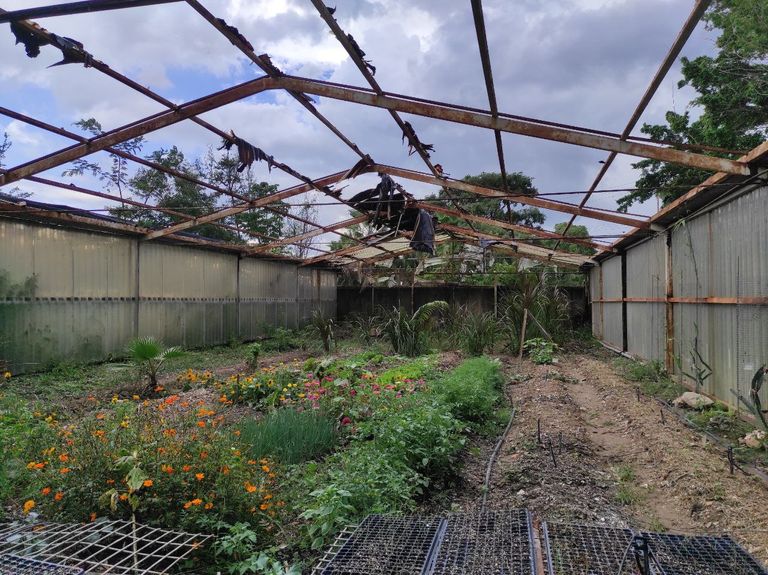
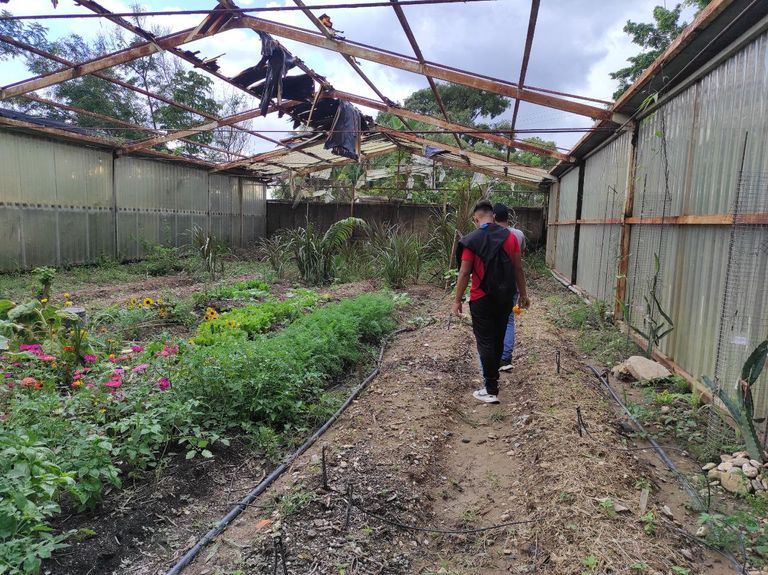

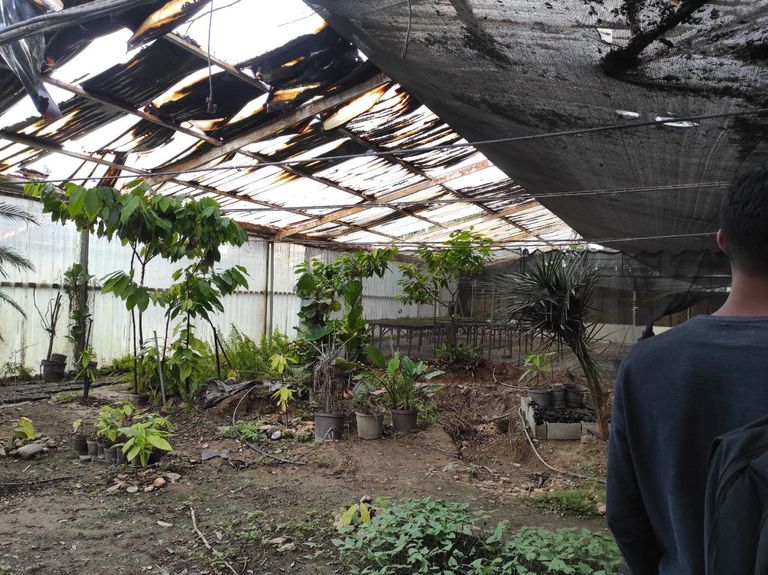
The technique I learned was to grow some lures, i.e. very pretty showy plants that will attract ladybugs, butterflies, and some beetles which are beneficial insects since they feed on other malicious ones.
Plants that could be used for this work are:
Dead man's carnation (Tagetes patula. L): Its extract can also be used as a fungicide, and repellent.
Garden sunflower (A very different species from the sunflower we are familiar with): Attracts ladybugs and butterflies.
Nim or Neem (Azadirachta indica): Likewise the plant is repellent but its extract can be applied as an insecticide.
Albaca (Ocimum basilicum): It is also repellent against mites and aphids. It is widely used in tomato crops.
In the same way the variability of crops can be positive for us, since the malicious pests will have other more resistant plants where they can entertain themselves and these are more resistant.
The professor's project is based on having Pitahayas to obtain commercial cuttings, carrots, lettuce, cilantro, chives, melons, pumpkins and squash among others. Around these crops are the plants I mentioned.
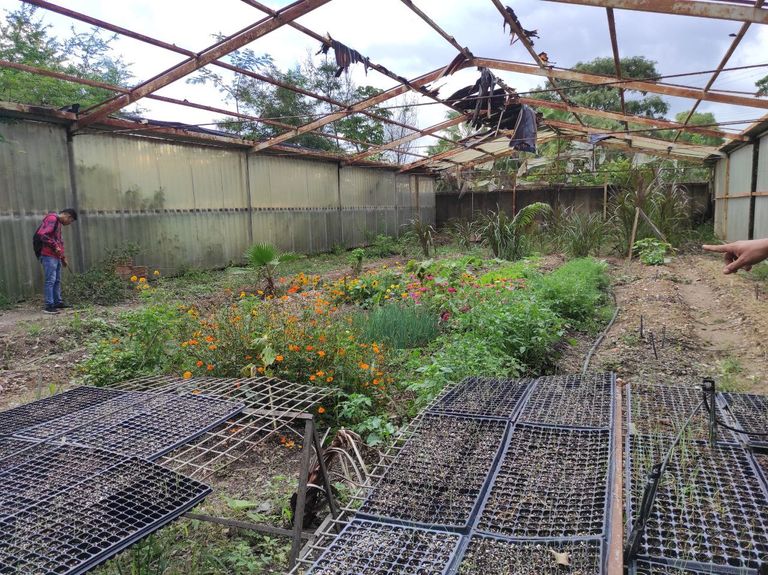
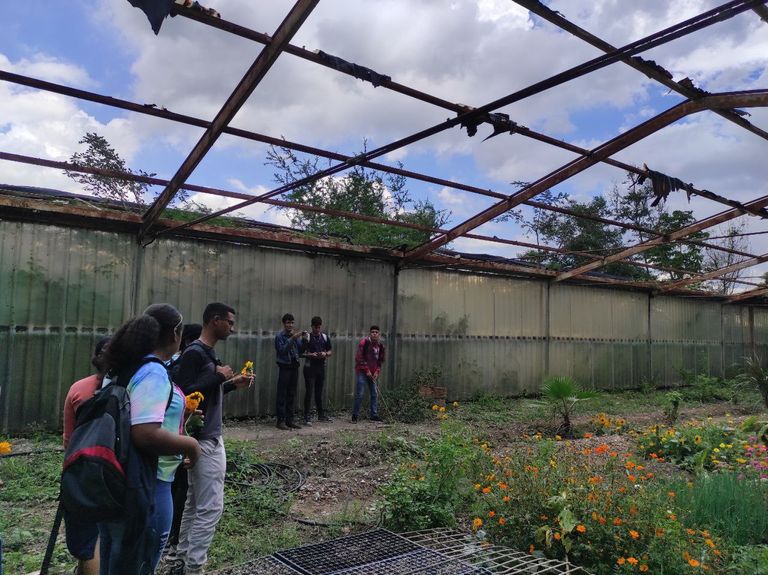
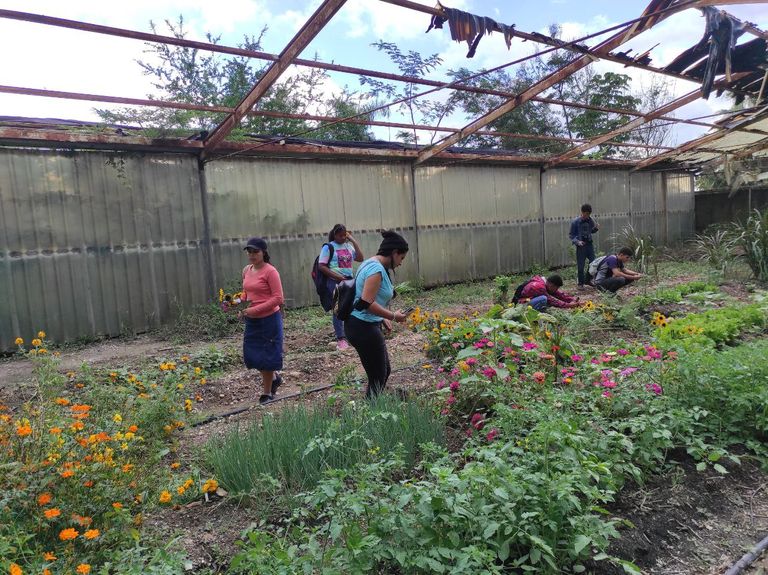
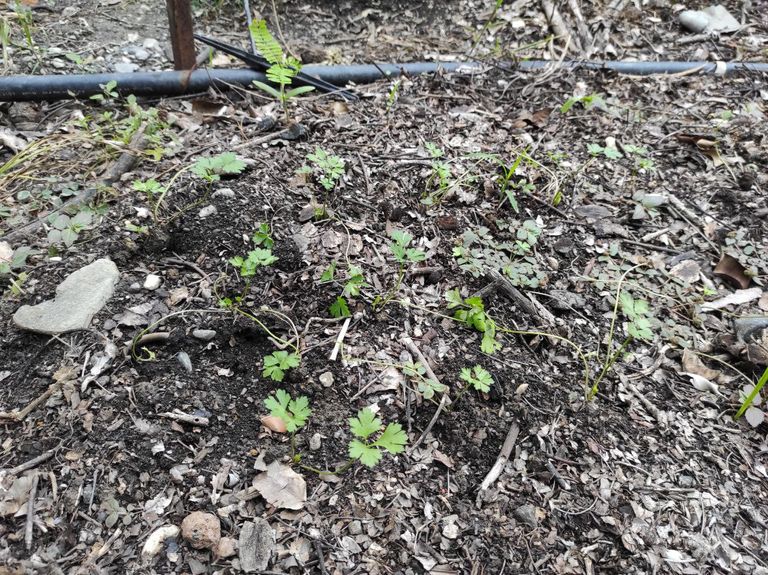
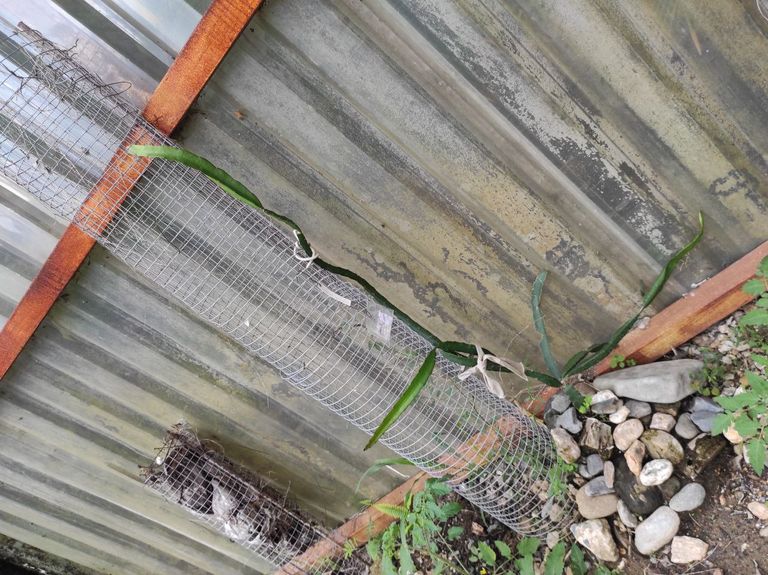
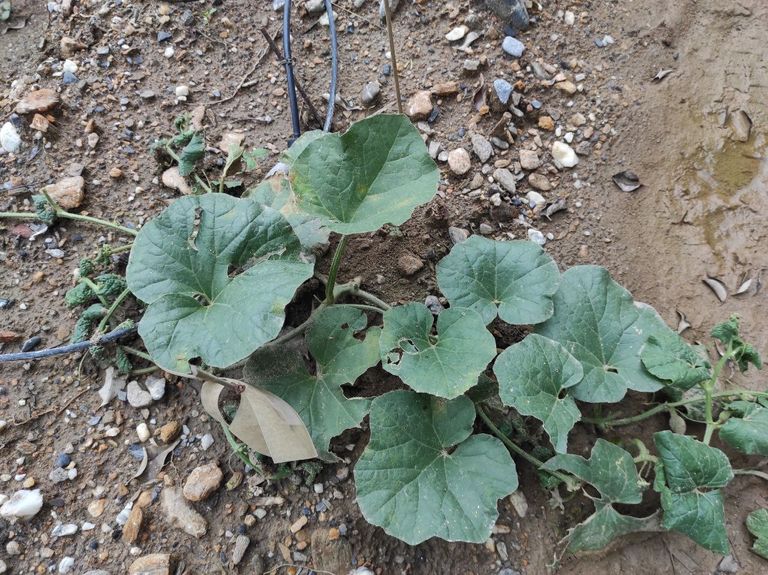
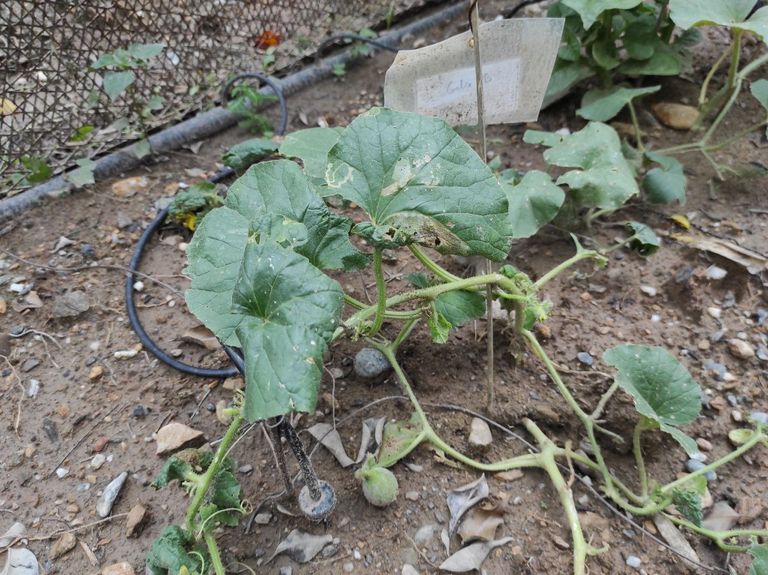

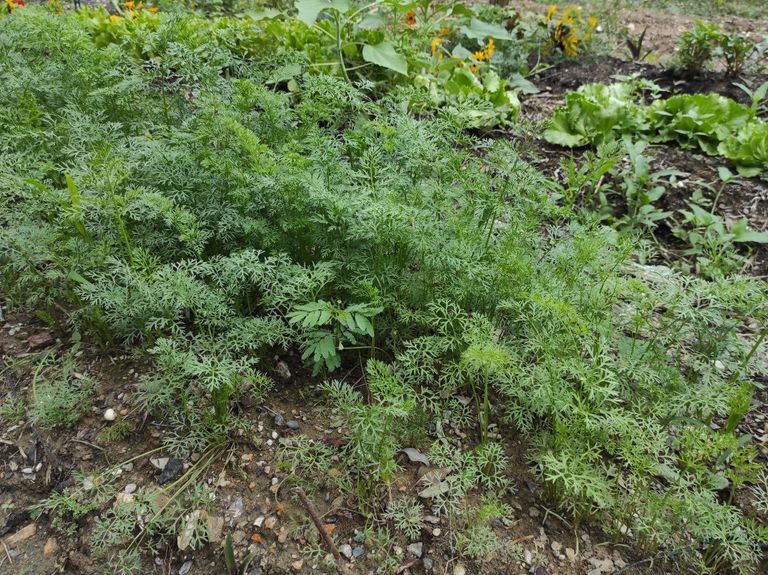

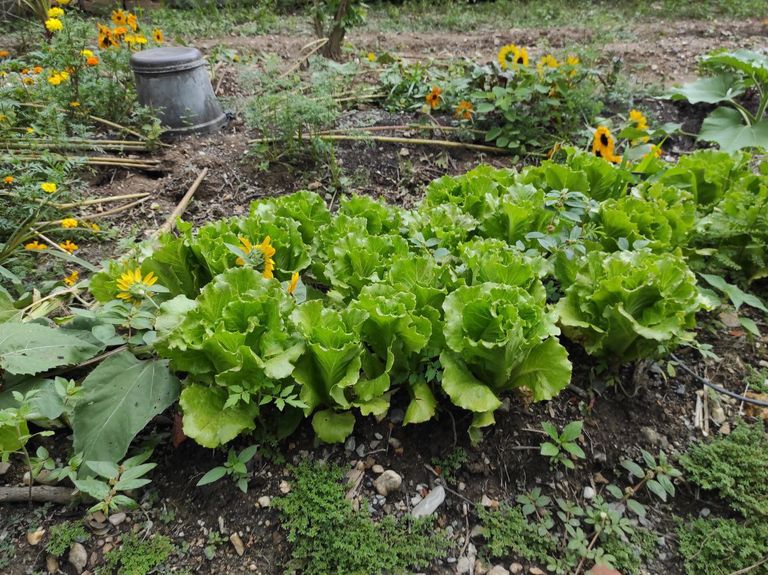
Use of efficient micro organisms (called E.M.).
Efficient or beneficial micro organisms are those bacteria that decompose soils in such a way that they leave the nutrients released to be absorbed by plants more easily. Usually these E.M. decompose soil organic matter and organic matter that we add. The composition of the bacteria can be various, such as lactic acid bacteria, yeasts and some photosynthetic bacteria.
The cultivation of these bacteria is very simple and it is possible to reproduce them in mass to apply them as a kind of fertilizer through the irrigation hoses directly to the soil, they will do the job of providing natural fertilizer to the plants. Usually these bacteria are activated with milk and reproduce faster with molasses, they are extracted from soils very rich in OM, bacteria and nutrients from humid forests.
In case of germination of seeds, we can use the Trichoderma together with the E.M. for fungus care of our seeds to germinate. This gives very high germination results and resistance to the plants to the fungi that attack them very young.
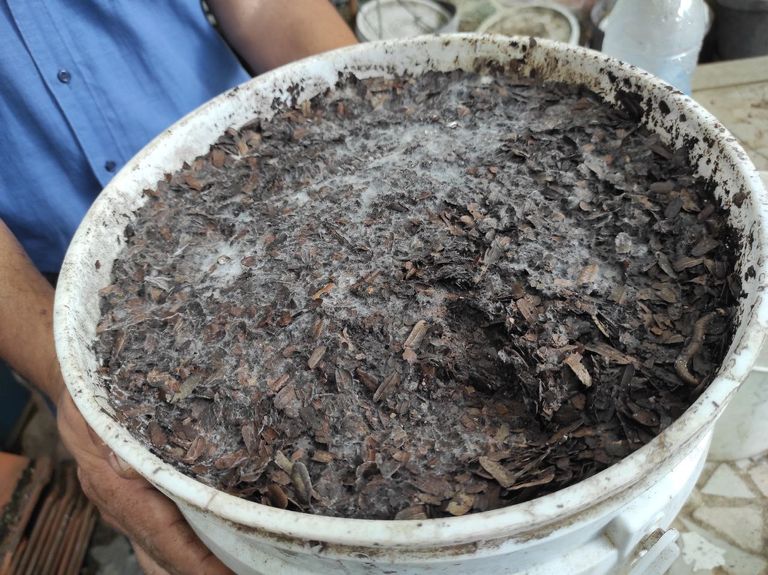
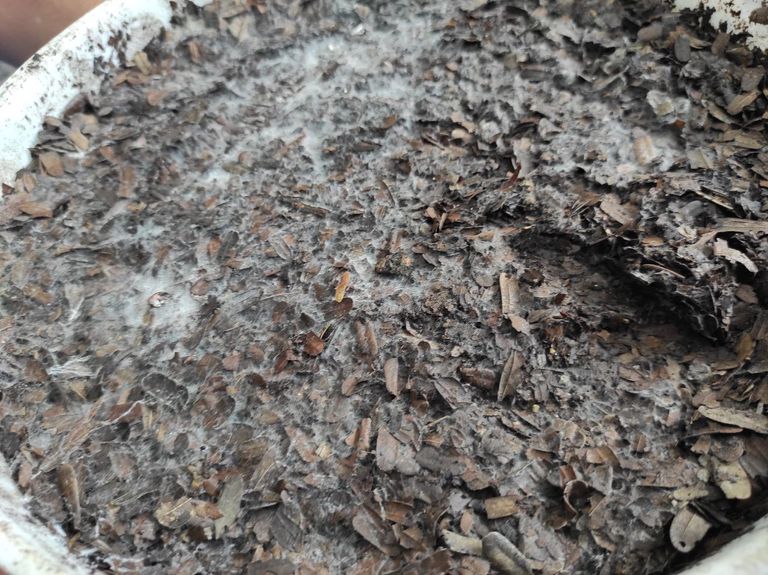


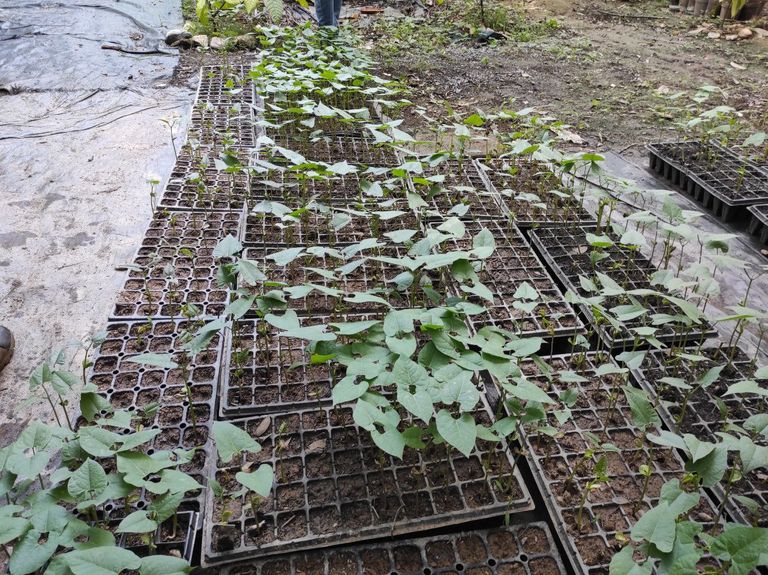
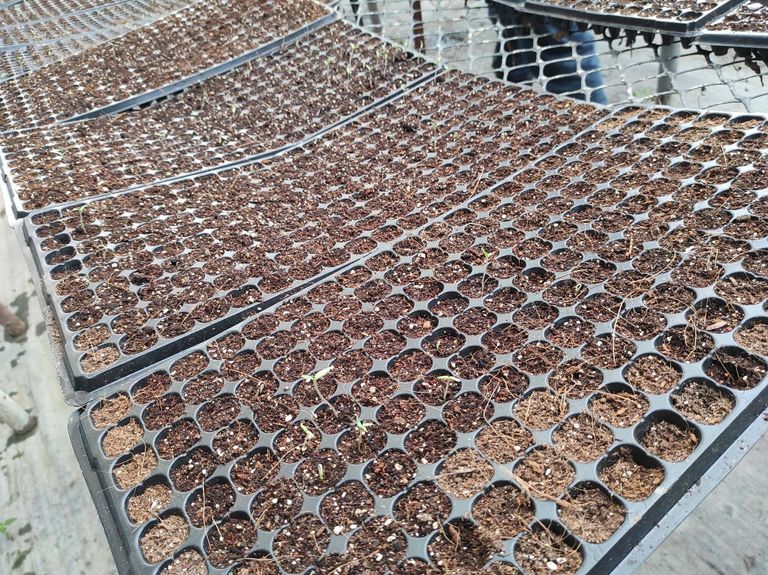
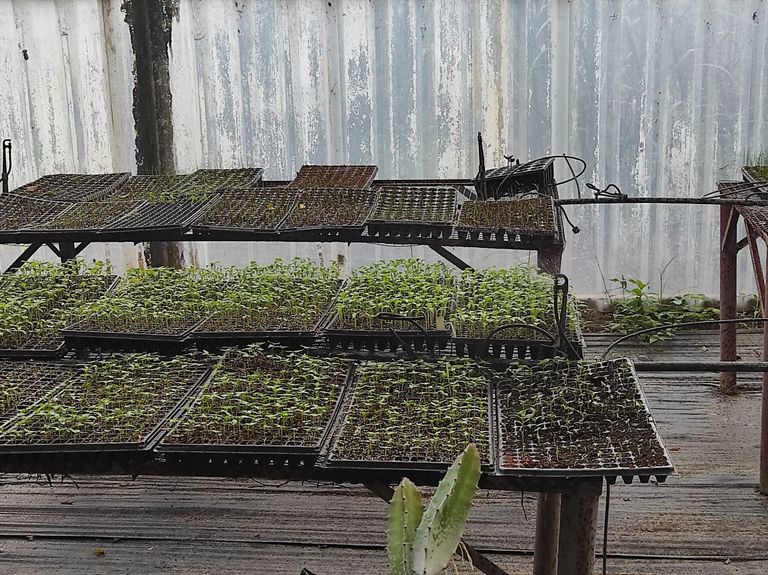
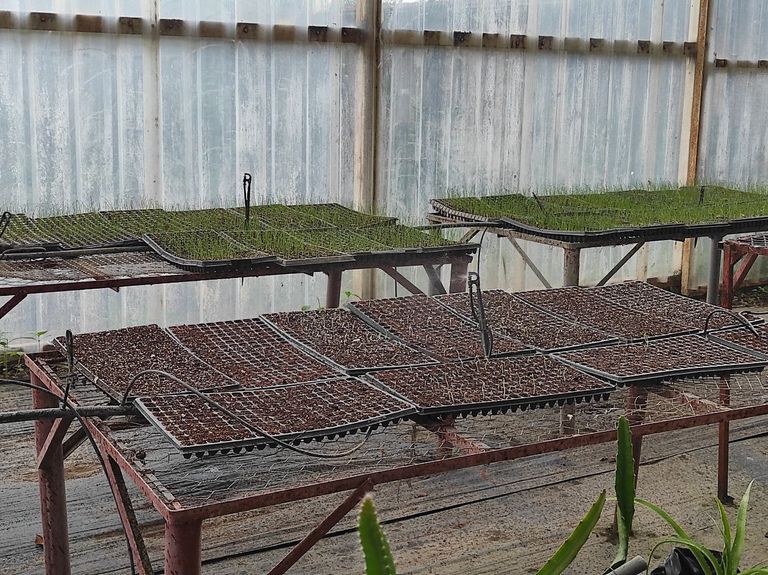
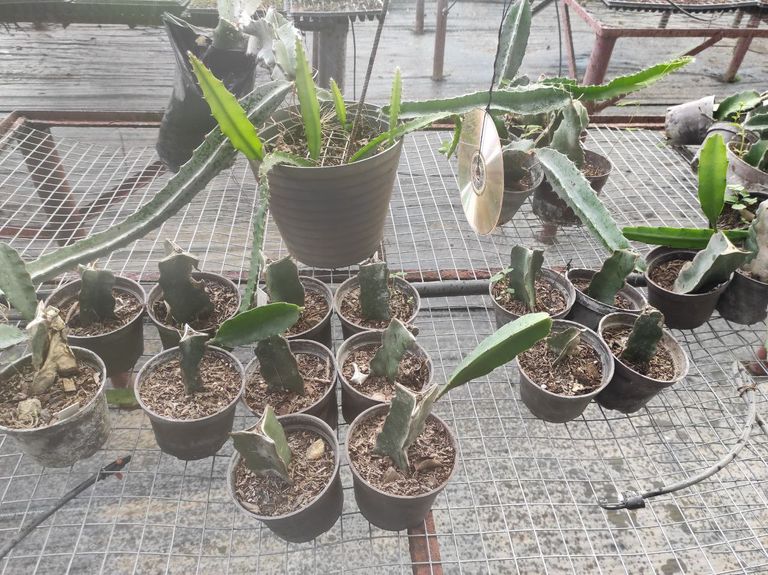
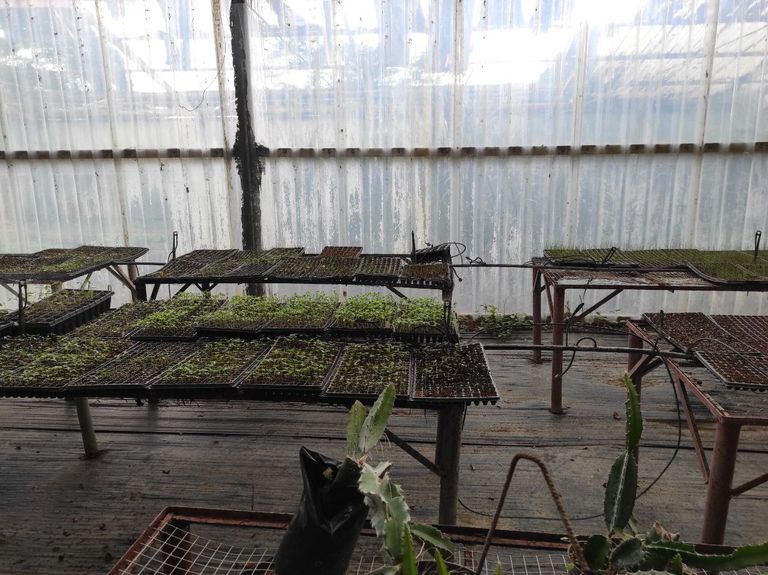
Finally, the use of organic compost, such as solid or liquid worm humus, gives incredible results.
Some cocoa plants have assimilated it very well (it is important to note that we are in the center of the city, here the climate is very hot and cocoa plants are not from this climate, but with this care and applications of compost have adapted very well. Some have already begun to bear fruit at 1 year and 11 months, with many inflorescences and this is due to the fact that they are criollo cocoa plants). There are other plants younger than 1 year old, and they already have their first flowering, this is because they are grafts.
Everything that has been grown here is 100% organic, no chemicals have been used so far, the fertilizer has been based on compost and application of organic matter to the soil, worms have already begun to appear which is also a good sign.
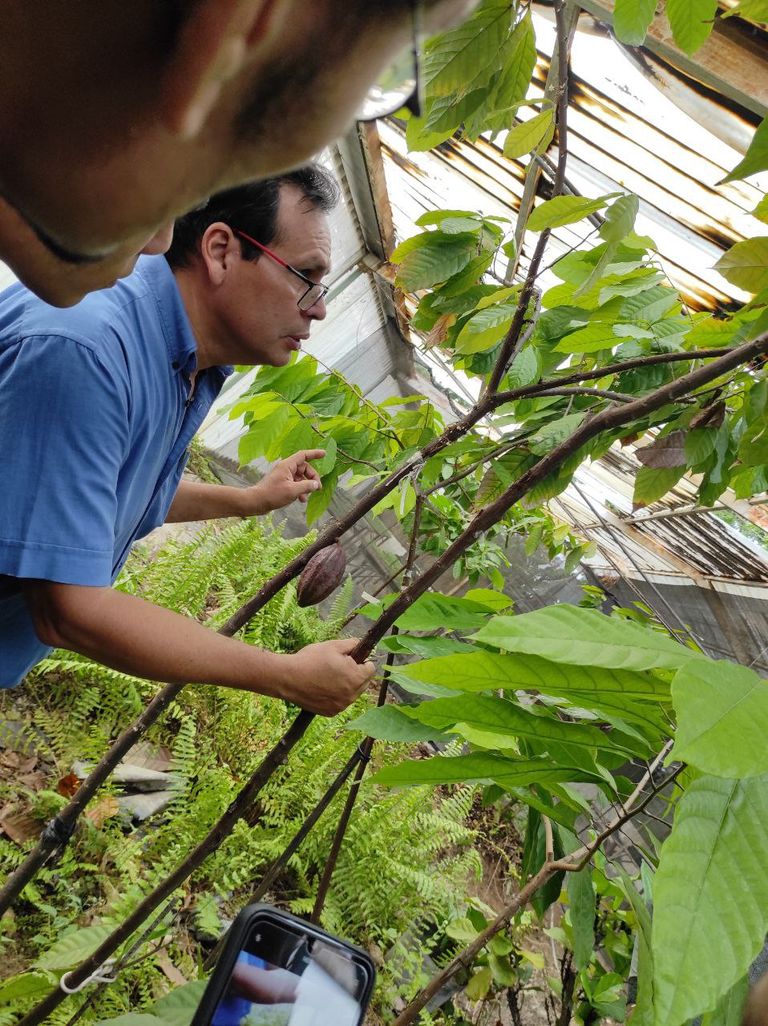
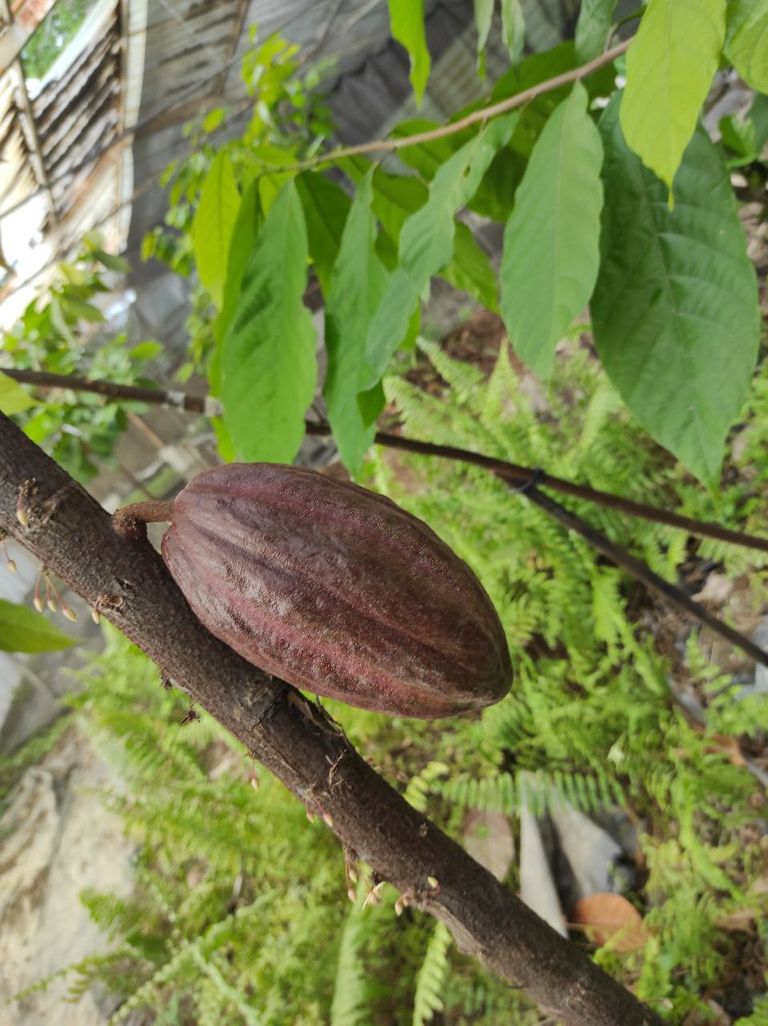

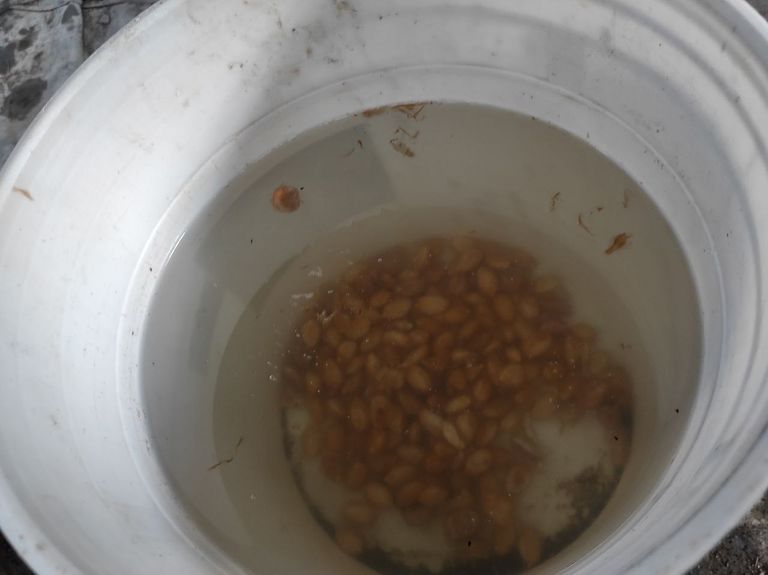
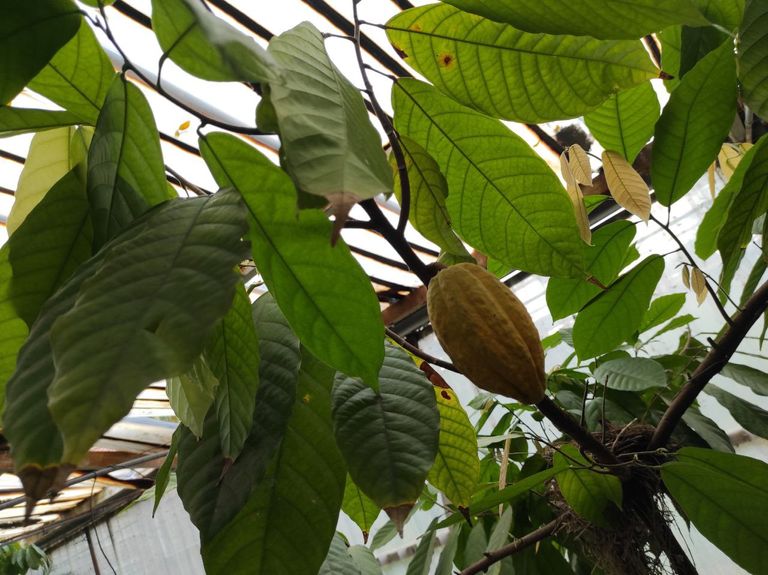
Currently the proposal we have is to take a varied crop to open fields in the same university, in a commercial way applying all this knowledge that has already been previously verified with more than one harvest. The result that the professor obtained is very good and without spending too much money.
So see you in the next project that I will share with you soon.
-________________________________________________________-
Version en Español
Hola compañeros jardineros, agricultores y amantes de este mundo, estuve mucho tiempo fuera de esta hermosa comunidad debido a mis clases en la universidad, sin embargo he vuelto con algunas experiencias que he vivido en las ultimas semanas.
Creo que mi ultimo post aquí fue sobre la finalización de mi cultivo de "tomate de invierno (temporada de lluvia)", y esta vez les traigo algo nuevo que viví y comprobé en una practica de campo, y es sobre como mantener alejadas a las plagas con plantas repelentes, como tener suelos puros gracias a la utilización de microorganismos benéficos y aplicaciones de compost orgánicos.
Toda esta clase fue dada en 2 semanas, una semana completa de teoría y otra semana practica, todo fue referente a la agricultura orgánica y al parecer mi profesor nos nada un curso con diploma sobre esto.

Comencemos.
Control de plagas sin mallas anti áfidos o estructuras de viveros.
Lo primero que debemos tener en cuenta a la hora de tener cultivos ya sea comercialmente, como cultivos en nuestros jardines para uso casero, es que hay insectos que son controladores biológicos de muchas plagas maliciosas. Usualmente la cantidad de plagas maliciosas se asocia a las zonas agrícolas que llevan años explotando las tierras para cultivos comerciales, estas plagas se han hecho resistentes a los insecticidas y a su entorno por lo cual es mas común ver insectos maliciosos en cultivos grandes, en lugar de verlos en grandes cantidad en nuestros cultivos caseros o nuestros jardines.
Las casas de cultivos que poseen mallas anti áfidos se hicieron para disminuir el gasto en insecticidas, ya que impedimos el paso de ellos a nuestro ecosistema dentro. Sin embargo a veces suelen colarse algunos y son parte de un ecosistema diferente.
El vivero donde trabajamos sufrió daños en su estructura por lo cual ya no posee techo y otra parte lo tiene aun en pie, por lo cual nuestro profesor nos comento que encontró una manera de cultivar aquí o germinar semillas utilizando plantas repelentes y controladores biológicos.




La técnica que aprendí fue cultivar algunos señuelos, es decir plantas llamativas muy bonitas que atraerán mariquitas, mariposas, y algunos escarabajos que son insectos benéficos ya que se alimentan de otros maliciosos.
Las plantas que podrian usarse para esta labor son:
Clavel de muerto (Tagetes patula. L): Su estracto tambien puede utilizarse como fungicida, y repelente.
Girasol de jardín (Una especie muy distinta al girasol con el que estamos familiarizados): Atrae mariquitas y mariposas.
Nim o Neem (Azadirachta indica): De igual manera la planta es repelente pero su extracto puede ser aplicar como insecticida.
Albaca (Ocimum basilicum): También es repelente contra ácaros y áfidos. Esta es muy utilizada en cultivos de tomate.
De igual manera la variabilidad de cultivos puede ser positivo para nosotros, ya que las plagas maliciosas tendrán otras plantas mas resistentes donde pueden entretenerse y estas son mas resistentes.
El proyecto del profesor de basa en tener Pitahayas para obtener esquejes comerciales, zanahoria, lechuga, cilantro, cebollín, melón, auyama o calabaza entre otros. Al rededor de estos cultivos se encuentran las plantas que mencione.











Utilización de micro organismos eficientes (denominados E.M).
Los micro organismos eficientes o benéficos son aquellas bacterias que descomponen los suelos, de tal manera que dejan los nutrientes liberados para ser absorbidos por las plantas mas fácil. Usualmente estos E.M descomponen la materia orgánica del suelo y materia orgánica que agreguemos. La composición de las bacterias pueden ser varias, como bacterias acido-lácticas, levaduras y algunas fotosintéticas.
El cultivo de estas bacterias es muy sencillo y se puede lograr reproducirlas en masa para aplicarlas como una especie de fertilizante por las mangueras de riego directamente al suelo, ellas harán el trabajo de aportar abono natural a las plantas. Usualmente estas bacterias se activan con leche y se reproducen con mayor rapidez con melaza, son extraídas de suelos muy ricos en M.O, bacterias y nutrientes de los bosques húmedos.
En caso de germinación de semillas, podemos utilizar el Trichoderma junto con los E.M para cuidado de hongos de nuestras semillas a germinar. Esto da resultados de germinación muy altos y resistencia a las plantas a los hongos que las atacan muy jóvenes-










Por ultimo la utilización de compost orgánico, como humus de lombriz solido o liquido da resultados increíbles.
Algunas plantas de cacao lo han asimilado muy bien (es importante acotar que estamos en el centro de la ciudad, aquí el clima es muy cálido y las plantas de cacao no son de este clima, pero con estos cuidados y aplicaciones de abono se han adaptado muy bien. Algunas ya han comenzado a tener frutos con 1 año y 11 meses, muchas inflorescencias y esto se debe a que son plantas de cacao criollo). Hay otras plantas mas jóvenes con 1 año, y ya tienen su primera floración esto se debe a que son injertos.
Todo lo que se ha cultivado aquí es 100% orgánico, no se ha utilizado ningún químico hasta ahora, el abono ha sido a base de compostados y aplicación de materia orgánica al suelo, ya comenzaron a aparecer lombrices lo cual también es una buena señal.





Actualmente la propuesta que tenemos es llevar un cultivo variado a campo abierto en la misma universidad, de manera comercial aplicando todos estos conocimientos que ya han sido verificados previamente con mas de una cosecha. El resultado que el profesor obtuvo es muy bueno y sin un gasto de dinero excesivo.
Así que nos vemos en el próximo proyecto que les compartiré pronto.